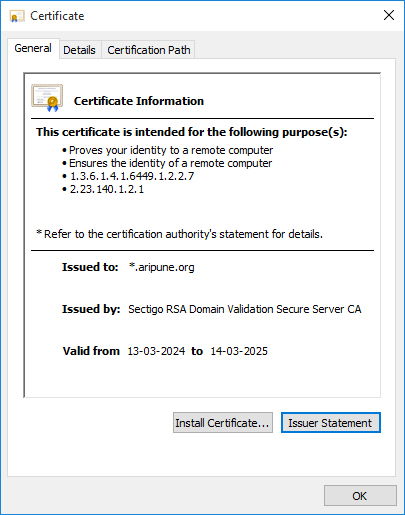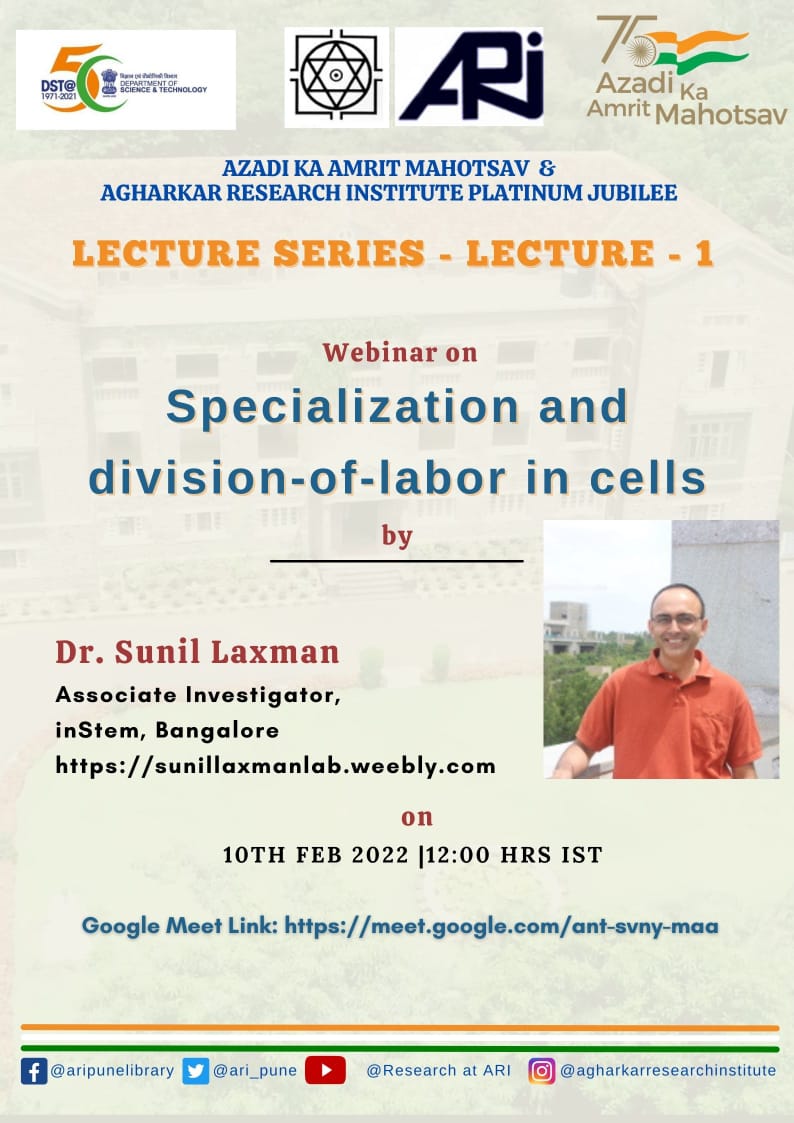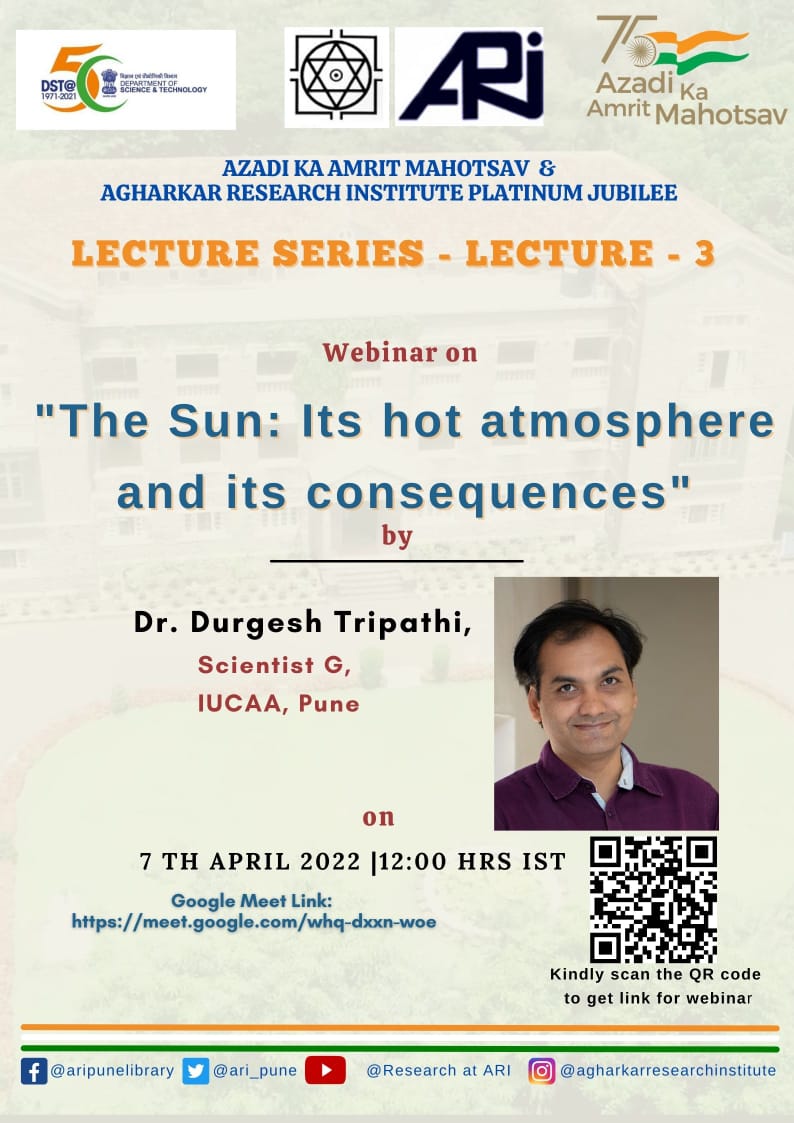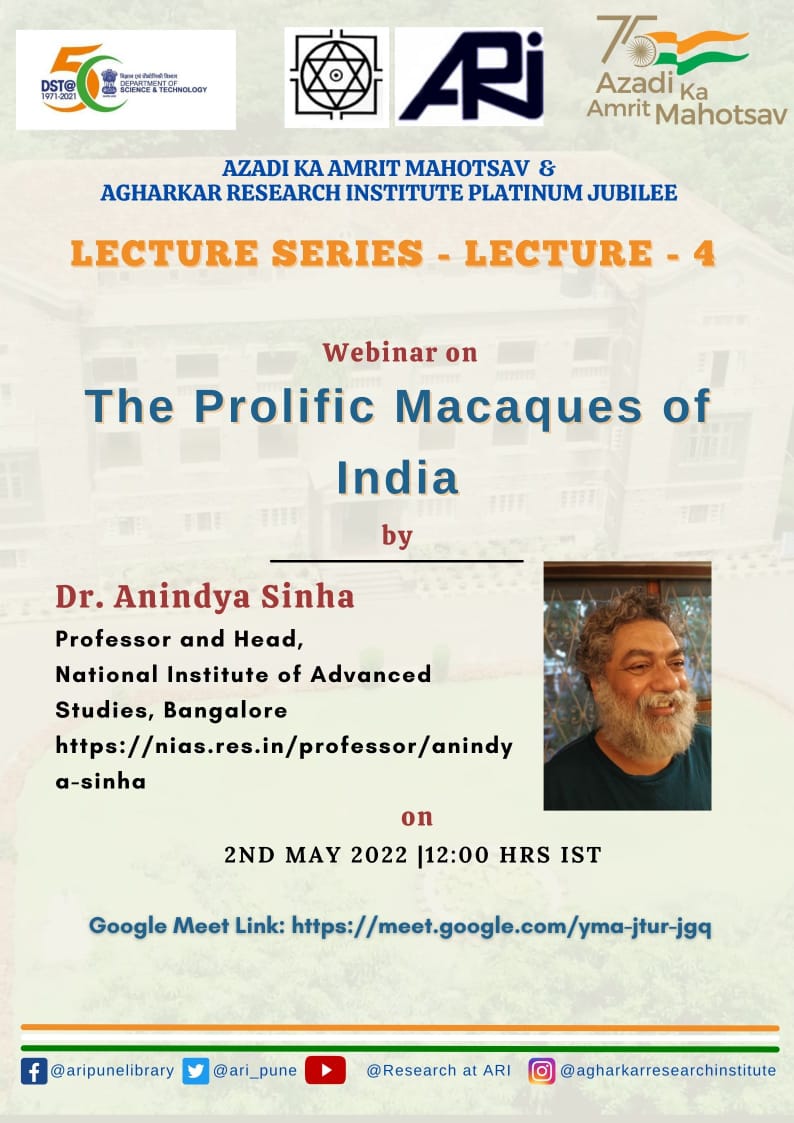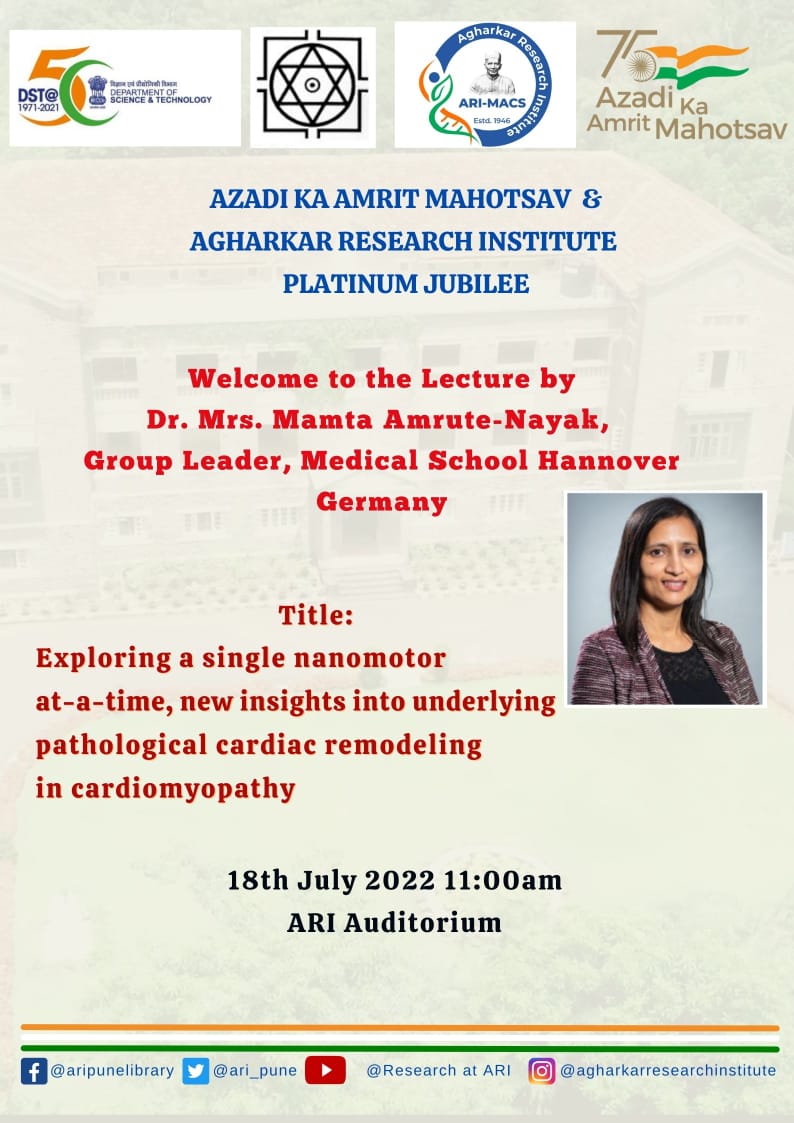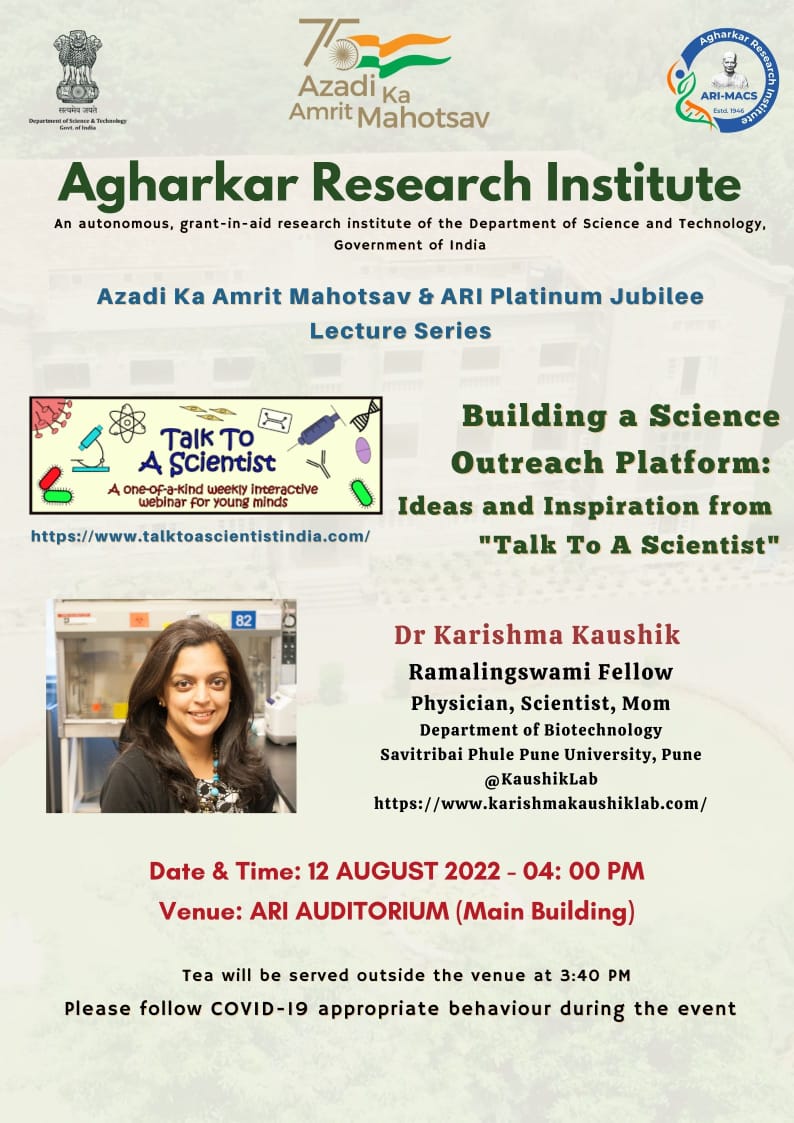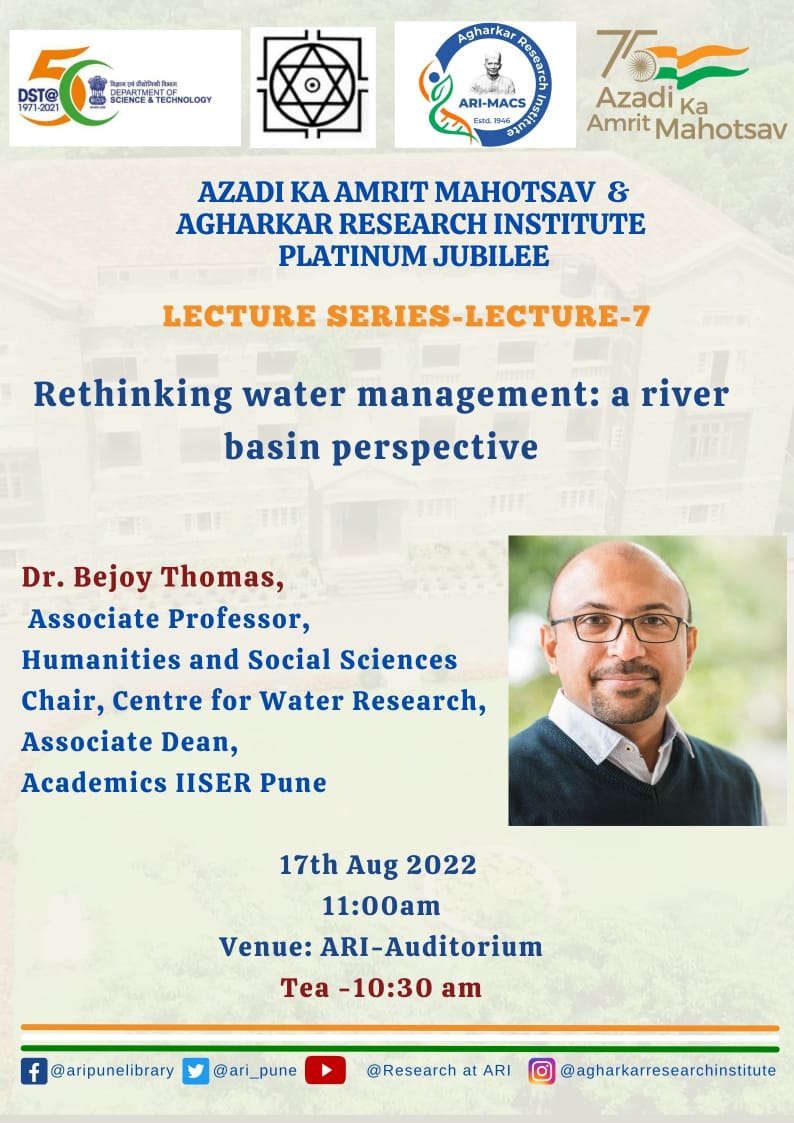
Name : Dr. Vandana Ghormade
Designation : Scientist – E
Brief Background :
Dr Vandana Ghormade, Scientist E, Nanobioscience Group focuses her research on the potential applications of nanoscience for delivery, diagnostics and therapeutics. She is working in Nanbioscince since 2007 after completing her Postdoctoral Fellowship from Agroscope Reckenholz–Tänikon Research Station ART, Zürich, Switzerland. She was awarded the CSIR-research associateship in National Chemical Laboratory Pune. She did her doctoral work from National Chemical Laboratory, Pune in Biotechnology. She was a gold medalist in her masters in Botany from University of Pune.
- 1996-2000 PhD, Biotechnology, University of Pune
- 1991 B.Ed, University of Pune
- 1989 M.Sc, Botany, University of Pune (Gold Medal)
- 1987 B.Sc (Hons), Botany, Delhi University
- Nanoscience for protein, drug and siRNA delivery.
Nanotechnologies for pathogen detection and biosensors.
Education & Scientific Career
- 1996-2000 PhD, Biotechnology, University of Pune
- 1991 B.Ed, University of Pune
- 1989 M.Sc, Botany, University of Pune (Gold Medal)
- 1987 B.Sc (Hons), Botany, Delhi University
- 2007 onwards Scientist, Centre for Nanobioscience, Agharkar Research Institute, Pune
- 2005-07 Postdoctoral Fellow, AgroscopeReckenholz–Tänikon Research Station ART, Zürich, Switzerland
- 2001-05 Research Associate, CSIR, National Chemical Laboratory. Pune
- 2001-05 Research Associate, CSIR, National Chemical Laboratory. Pune
- 1991-1993 Lecturer, RamnarainRuia College, Mumbai.
Awards
- Award: Elected as Fellow of Maharashtra Academy of Sciences in 2015
- 2005 Guman Devi Verma Best Woman Scientist (Indian Society of Mycology and Plant Pathology)
- 2001 CSIR-Research Associateship
- 2001 Best Speaker, National conference in fungal diversity and biotechnology, K.V. Pendharkar College, Mumbai.
- 2000 Best Speaker, National Symposium on Basic and Applied Aspects of Plant and Microbial Technology, Modern College, Pune
- 1998 Prize second, Golden Jubilee Research Students Seminar University of Pune
- 1996 CSIR-Research Fellowship
- 1989 Gold Medal, M.Sc Botany, University of Pune
- 1989 Late Milind Gandhi Scholarship, University of Pune
- Nanotechnology involves creation and utilization of materials, devices or systems on the nanometer scale. My priority research area includes nanotechnology for applications such as drug, protein, gene delivery; molecular imaging; biomarkers and bio-sensors. Target-specific drug therapy and methods for early diagnosis of pathologies are the other research areas where nanotechnology would play a vital role.
- Ecological degradation and development of resistance due to pesticide
can be mitigated by alternative biocontrol srategies for insect pests. RNAi has potential in biocontrol of insect pests for development as a specific method to control pests in agriculture. A novel approach using nanoparticles as a delivery system for RNAi is being for in vitro cell line studies and bioassays against armyworms. Nanoparticles enhance the uptake of dsRNA across the cellular membrane, avoid degradation and improve its stability. - In case of human health-care opportunistic fungal infections such as aspergillosis and candidiasis are becoming increasingly prevalent among immunocompromized individuals. Invasive aspergillosis is systemic secondary infection that is often unnoticed and therefore requires early, reliable detection for proper intervention. Conventional diagnostic methods like microscopic observation, histopathology, CT scans and molecular methods are limited as they are laborious, non-specific, expensive or under development. Whereas serological techniques focussing on detection of circulating antigens provide more promise. Nanoparticles as sensitive signalling labels, in combination with antibodies, can be used to develop Lateral Flow assay or ELISA formats. The development of nanotechnology based rapid diagnostics will help alleviate the increasing disease incidences in India by allowing timely treatment to patients.
- Another area being addressed is the treatment of fungal pathogens. Currently, the drugs used for treatment of fungal infections are limited by problems of resistance, solubility and toxicity. Biocompatible polymeric nanoparticles are used in drug delivery for favourable characteristics such as slow sustained release, increasing drug solubility, reducing drug toxicity and specific tissue targeting. Delivery of antifungal drugs with polymeric nanoparticles would contribute to their improved pharmacological characters. Tailoring of polymeric nanoparticles surfaces to promote particle circulation and targeting to the tissue will improve the drug efficacy and reduce toxicity.
Other interests
- Bioimaging with polymer coated quantum dots (robust, photostable, fluorescent nanoparticles)
- Application of polymer stabilized magnetic nanoparticles for hyperthermia treatment and drug delivery against cancer.
- Development of biomarkers/biosensors for pathogen detection
Selected Publications (2011 Onwards)
- VM Kulkarni, D Bodas, D Dhoble, V Ghormade, KM Paknikar. (2016). Radio-frequency triggered heating and drug release usingdoxorubicin-loaded LSMO nanoparticles for bimodal treatment ofbreast cancer. Colloids and Surfaces B: Biointerfaces 145:878–890.
- V Ghormade, H Gholap, S Kale, V Kulkarni, S Bhat, K Paknikar. (2015) Fluorescent cadmium telluride quantum dots embedded chitosan nano particles: a stable, biocompatible preparation for bio-imaging. Journal of Biomaterials Science, Polymer Edition, 26: 42–56.
- VivekKamat, IlaMarathe, Vandana Ghormade, DhananjayBodas, Kishore Paknikar (2015) Synthesis of monodisperse chitosan nanoparticles and in situ drug loading using active microreactor. ACS Appl Mater Interfaces 7:22839-47 (IF 6.7)
- V. Ghormade. RNAi in world of insects. In: Biotechnology across the Borders (CSIR-NCL, CONACYT-Mexico) 2013, pp155-170
- V Ghormade, MV Deshpande and KM Paknikar. (2011) Perspectives for nano-biotechnology in plant protection and nutrition. BiotechnolAdv 29:792-803 (IF: 7.6)
- CV Joshi, V Ghormade, P Kunde, P Kulkarni, H Mamgain, S Bhat, KM Paknikar, MV Deshpande. (2010) Flocculation of dimorphic yeast Benjaminiellapoitrasiiis altered by modulation of NAD-glutamate dehydrogenase. BioresTechnol 101: 1393-1395 (IF: 4.45)
- P Chavan, S Mane, G Kulkarni, S Shaikh, V Ghormade, DP Nerkar, Y Shouche, MV Deshpande. (2009) Natural yeast flora of different varieties of grapes used for wine making in India. Food Microbiol. 26:801-808 (IF: 2.8)
- J Enkerli, V Ghormade, C Oulevey, F Widmer (2009). Metarhiziumanisopliaechitinase PCR-RFLP. J InvertebrPathol 102:185-188 (IF: 1.463)
- N Doiphode, V Ghormade, MV Deshpande (2009). Chitosan production using a dimorphic zygomycetous fungus Benjaminiellapoitrasii: role of chitin deacetylase for increased deacetylation. Asian Chitin Journal 5: 19-26.
- S Kulkarni, V Ghormade, G Kulkarni, M Kapoor, S Chavan, S Patil, Y Shouche, MV Deshpande. Comparison of Metarhizium isolates for biocontrol of Helicoverpaarmigera (Lepidoptera: Noctuidae) in Chickpea. Biocontrol SciTechnol 18: 809-828. (IF: 1.087)



